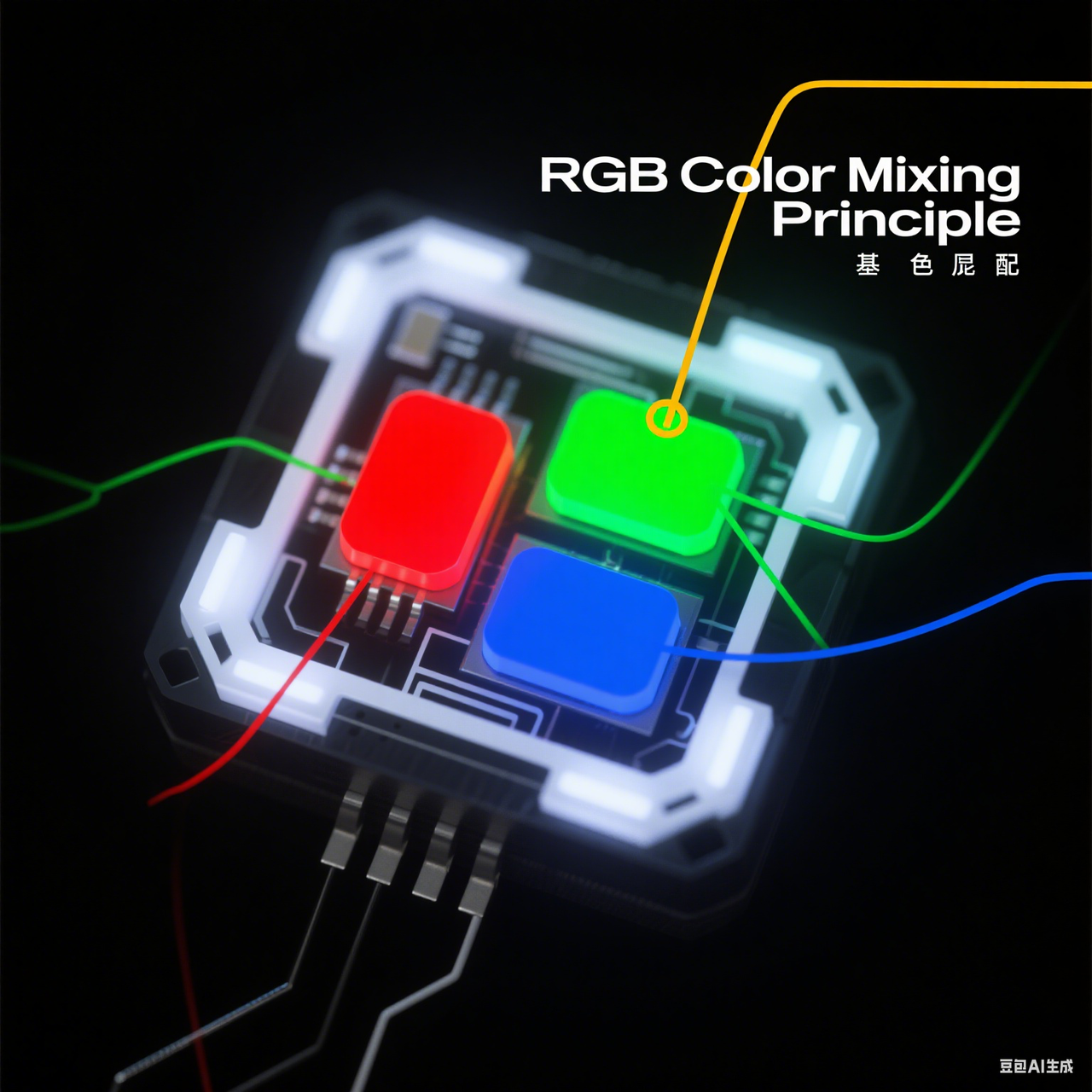
RGB vs RGBW vs RGBWW: Smart Lighting Differences Explained
In the era of personalized home lighting, smart ambient lights have become a favorite for creating dazzling visual experiences. However, terms like RGB, RGBW, and RGBWW often leave buyers confused. While they may seem similar, these technologies differ significantly in light composition, color performance, and practical applications – factors that directly impact user experience and purchasing decisions. Let’s break down their differences and explore key considerations for choosing smart ambient lights.
I. Core Differences Between RGB, RGBW, and RGBWW Smart Ambient Lights
1. Light Composition & Working Principles
RGB Lights
Use Red, Green, and Blue LED chips to create colors through additive mixing. Lacks dedicated white light, resulting in less accurate whites.
RGBW Lights
Add a pure White LED to RGB, delivering cleaner whites and smoother color transitions. Ideal for balanced ambient/functional lighting.
RGBWW Lights
Incorporate two white LEDs (Warm White + Cool White) alongside RGB. Enables precise color temperature control (2700K-6500K) and richer color blends.
I. Fundamental Differences: RGB vs RGBW vs RGBWW
1. Light Composition & Working Principles
RGB Lighting
Components: Red, Green, Blue LED chips
Color Creation: Blends three base colors through additive mixing
Limitation: Struggles to produce pure white light (combined RGB results in slightly off-white)
RGBW Lighting
Upgrade: Adds dedicated White LED to RGB trio
Advantage: Delivers authentic whites (2700K-4000K) + smoother color transitions
Best For: Hybrid functional/ambient lighting
RGBWW Lighting
Premium Setup: Combines RGB with Warm White (2700K) + Cool White (6500K) LEDs
Superpower: Full-spectrum control from candle-like warmth to daylight coolness
Pro Tip: Enables circadian lighting adjustments matching natural daylight cycles
2. Color Performance & Lighting Effects
Type Color Strengths White Light Quality Ideal Use Cases
RGB Vivid neon hues, dynamic effects Artificial-looking white Gaming setups, parties
RGBW Natural pastels, soft ambiance Clean 4000K white Living rooms, bedrooms
RGBWW 16M+ colors + tunable whites Precision 2700K-6500K Home theaters, galleries
3. Application Scenarios
RGB Dominates:
🎮 Gaming caves | 🥳 Entertainment zones | 🍻 Bar accent lighting
RGBW Shines:
🛋️ Family lounges | 📖 Reading nooks | 🧘♀️ Relaxation spaces
RGBWW Excels:
📸 Photography studios | 🏨 Luxury hotels | 🖼️ Art exhibition lighting
II. Smart Ambient Light Buying Guide
1.Match Lighting to Your Lifestyle
Entertainment Hub? Choose RGB for rave-ready colors
Work-Life Balance? Opt for RGBW's hybrid functionality
Premium Experience? Invest in RGBWW's full spectrum control
2.CRI Matters More Than You Think
Minimum CRI 80 for general use
CRI 90+ essential for:
Artists' studios 🎨
Makeup vanities 💄
Product photography 📷
3.Brightness Dimming Capabilities
Large Areas (20m²+): 1000-1500 lumens
Task Lighting: 500-800 lumens with 10%-100% dimming
Mood Lighting: 200-300 lumens + smooth gradient transitions
4.Smart Home Integration Checklist
✅ Voice control (Alexa/Google/Siri)
✅ App scheduling (sunrise/sunset sync)
✅ Cross-platform compatibility (Apple HomeKit, SmartThings)
✅ Scene memory (save custom lighting presets)
5.Brand Reliability Check
Established Players: Philips Hue, LIFX, Govee
Emerging Brands: Nanoleaf, Twinkly, Wiz
Warranty: Minimum 2-year coverage recommended
Pro Tips for Maximum Impact
Layer RGBWW lights with smart blinds for dynamic daylight simulation
Use RGB strips behind TVs/desks to reduce eye strain (bias lighting)
Combine multiple types: RGB for accent + RGBWW for main lighting
Whether creating a gamer's paradise or a wellness-focused sanctuary, understanding RGB/RGBW/RGBWW differences ensures you choose lights that truly elevate your space.


